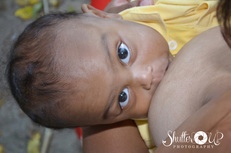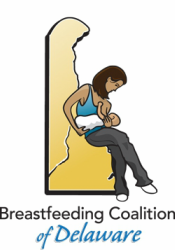Information and Resources for Child Care Providers

Caring for Breastfed Babies: Why Do Moms Need Your Support?
How Childcare Providers Can Help:
What can you do to protect and support breastfeeding in your facility?
Ten Steps to a Breastfeeding-Friendly Program
Provide Space for Breastfeeding or Pumping
Classroom
Breast Milk is NOT Classified as a Body Fluid
According to OSHA’s & CDC’s definitions, breast milk is classified as “food” & does not require universal precautions for handling body fluids.
You do NOT:
Human Milk Storage and Handling Guidelines
- BPA-free plastic or glass containers, with well-fitting tops
- Freezer milk bags that are designed for storing human milk
- Disposable bottle liners not recommended
Resources:
- 81% of mothers desire to breastfeed (CDC Infant Feeding Practices Study II 2005-07)
- 76% of mothers start to breastfeed (CDC Report Card 2012)
- 60% of mothers do not meet their breastfeeding goals (CDC Infant Feeding Practices Study II 2005-07)
- Returning to work is the primary reason for ending breastfeeding
- Shorter duration of breastfeeding if baby is in early care or education environment
How Childcare Providers Can Help:
- Work with family members to develop a breastfeeding support plan
- Have a list of helpful breastfeeding resources available for mothers
- Familiarize yourself with hunger cues: mouth movements, rooting, sucking on hands, restlessness
- Feed slowly and stop feeding when baby is ready
- Feed the baby gently and in a way that mimics breastfeeding
- Put breastfeeding mothers in touch with each other to encourage a support group
What can you do to protect and support breastfeeding in your facility?
- Establish a breastfeeding policy
- Provide staff training for safe handling and storage of human milk
- Post Human Milk Storage Guidelines where bottles are heated and on the refrigerator
- Designate a specific place for mothers to breastfeed or pump their milk
- Make breastfeeding information available to new and expecting mothers
- Provide encouragement and recognition to mothers who choose to breastfeed
Ten Steps to a Breastfeeding-Friendly Program
- Policy
- Staff training
- Communication with families
- Learning/play opportunities for children
- Proper storage and labeling by programs and families
- Environmental support
- Employee support
- Feeding plan
- Referrals to community support
Provide Space for Breastfeeding or Pumping
- Private
- Clean
- Comfortable
- Appropriate seating
- NOT a bathroom
- Electrical outlet for pumping
Classroom
- Clean, comfortable, appropriate seating
- Welcoming environment
Breast Milk is NOT Classified as a Body Fluid
According to OSHA’s & CDC’s definitions, breast milk is classified as “food” & does not require universal precautions for handling body fluids.
You do NOT:
- Become contaminated by touching human milk
- Need to wear gloves when feeding or handling human milk
- Need to store human milk in a separate refrigerator
Human Milk Storage and Handling Guidelines
- Store milk in 2-4 oz. amounts to help reduce waste
- Clearly label containers with baby's name, date, and time the milk was expressed, and date it was frozen (if applicable)
- Discuss milk storage with parents
- Swirl to combine layers - shaking milk damages components that are valuable infant
- Use first in, first out method (whichever milk was expressed first, use it first)
- BPA-free plastic or glass containers, with well-fitting tops
- Freezer milk bags that are designed for storing human milk
- Disposable bottle liners not recommended
Resources:
